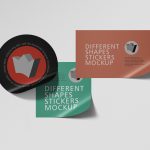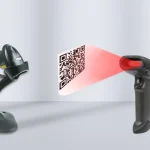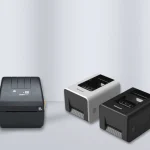Barcode labels are the unsung heroes of modern businesses. From retail to manufacturing, healthcare to logistics, they enable fast, reliable, and efficient information management. However, to fully harness the benefits of barcode labels, it is crucial to choose the right materials, print quality, and application methods.
What is a Barcode Label?
A barcode label is a specially printed label applied to a product, package, or document that carries digital data and can be scanned by optical readers. Barcodes typically encode numerical or alphanumeric data using a pattern of lines and spaces.
Barcode types vary depending on their application. Commonly used barcode types include:
- EAN-13, UPC: Preferred for retail products.
- Code 128, Code 39: Used in logistics and manufacturing systems for product tracking.
- QR Code, DataMatrix: Widely used in mobile tracking and systems requiring detailed data.
Tips for Proper Barcode Label Use
Proper barcode labeling is critical not only for successful scanning but also for long-term usage. Here are key considerations:
- Material selection: Choose label materials such as coated paper, PP, or thermal labels according to the product surface.
- Print quality: Clear and high-contrast printing ensures easy and accurate scanning.
- Placement: Apply the label on a flat, non-reflective surface in alignment.
- Size: Barcodes that are too small or too large can cause scanning issues. Ensure the label size is appropriate.
- Protection: If the product is exposed to water, heat, or sunlight, opt for laminated or durable materials.
Benefits of Barcode Labels for Businesses
Barcode systems eliminate manual data entry, increasing both speed and accuracy. When used properly, they offer numerous advantages to businesses:
Simplified inventory tracking
Barcode labels allow you to instantly view how many units of a product remain, when it was stocked, or when it was used. This simplifies inventory management and helps avoid excess stock costs.
Minimized errors
By eliminating manual entry, human errors are greatly reduced. Inventory data can be updated in real-time through quick scanning.
Reduced costs
Barcode systems help businesses significantly reduce personnel costs, time loss, and financial losses caused by errors.
Improved customer satisfaction
The speed and transparency offered by barcode systems enhance order accuracy and improve customer experience.
Regulatory compliance
In industries such as healthcare and food, barcodes are mandatory for product tracking and retrospective control mechanisms.
Common Usage Areas of Barcode Labels
Barcode labels are among the most widely used labeling solutions across various sectors. Here are some of the common industries and applications:
- Retail: Product pricing, shelf organization, sales tracking.
- Logistics: Shipping labels, cargo tracking.
- Healthcare: Patient wristbands, medication boxes, lab samples.
- Food & Beverage: Batch numbers, expiration dates, and ingredient information.
- Manufacturing: Part tracking, quality control, production line monitoring.
Each sector has its unique needs in terms of barcode type, label material, and printing method. Therefore, offering tailored solutions is essential.
Professional Barcode Labeling Solutions: DGS Printing Technologies
Barcode labels help your business integrate with digital systems, improve efficiency, and reduce errors. However, for long-lasting and reliable use, high-quality materials, professional printing, and expert consultation are essential.
DGS Printing Technologies offers end-to-end solutions in barcode labeling. From thermal and thermal transfer labels to ribbons, barcode printers, and label design software, we provide custom products and technical support for every stage of your labeling process.
To learn more about barcode labels, please visit our website: www.dgs.com.tr/en/






